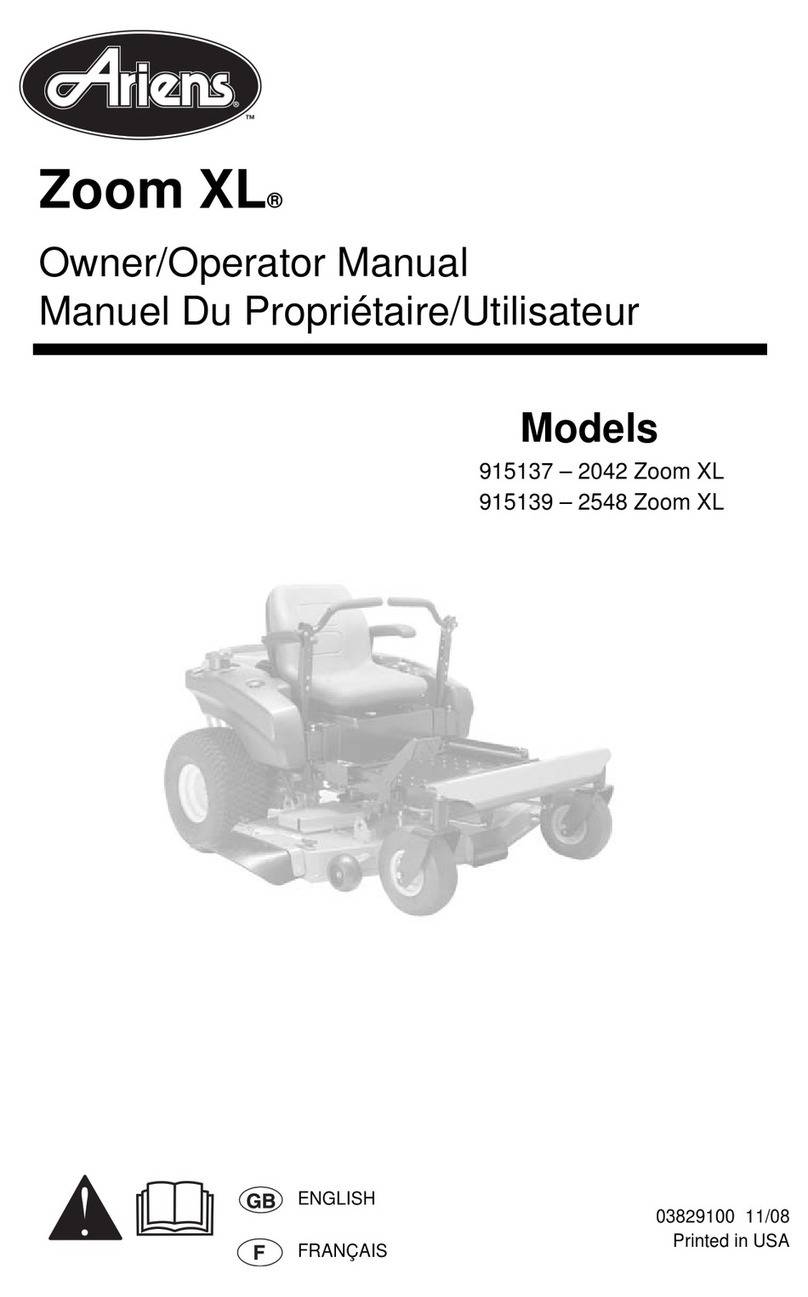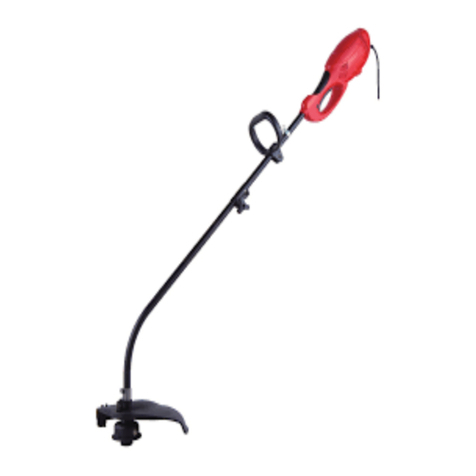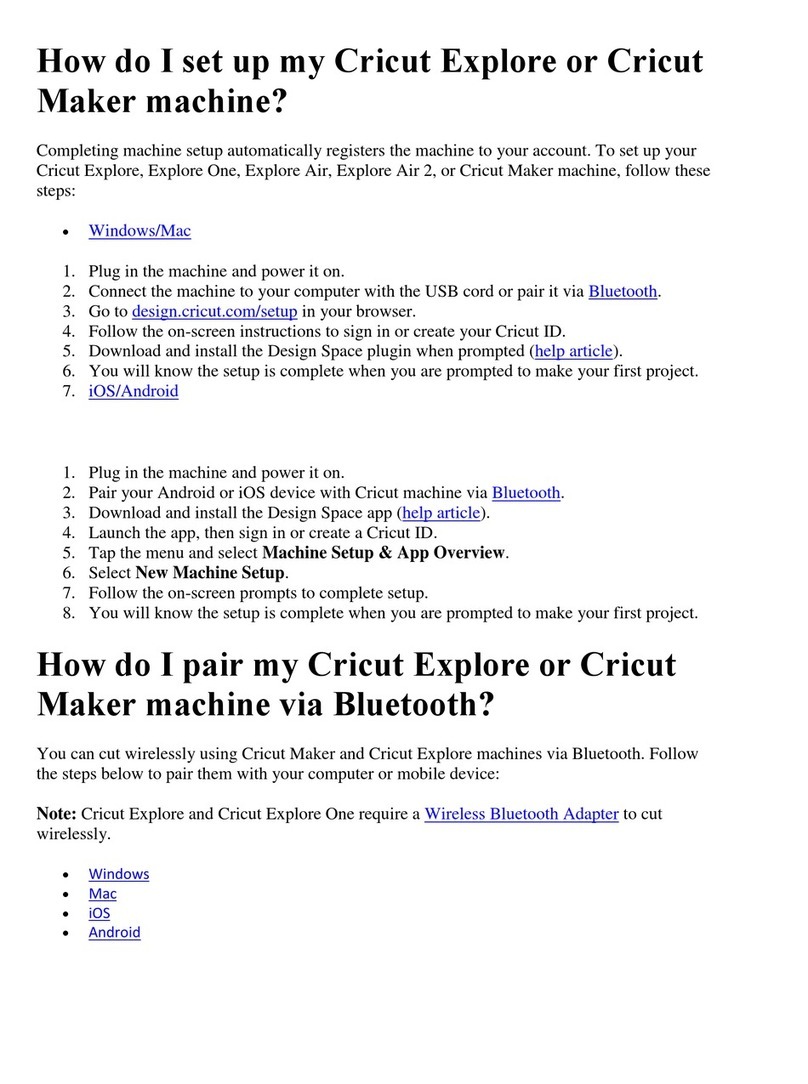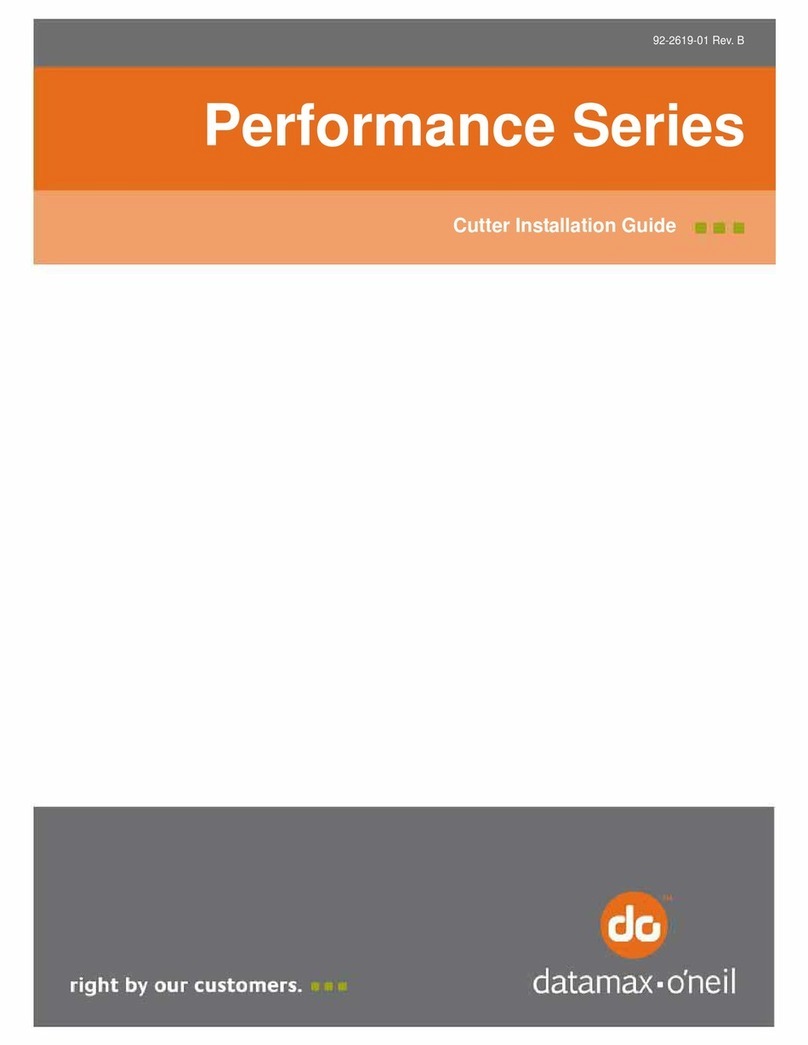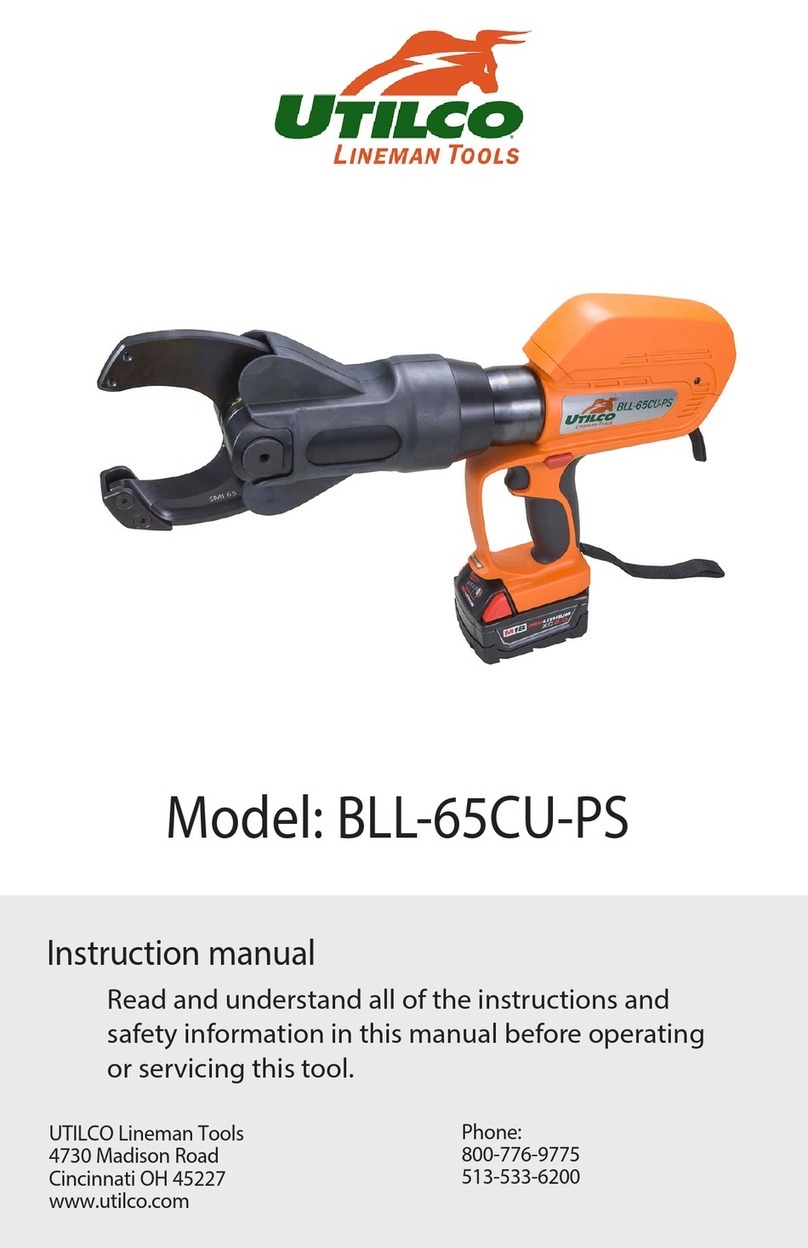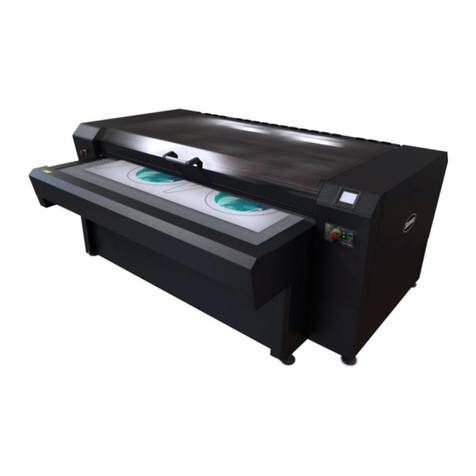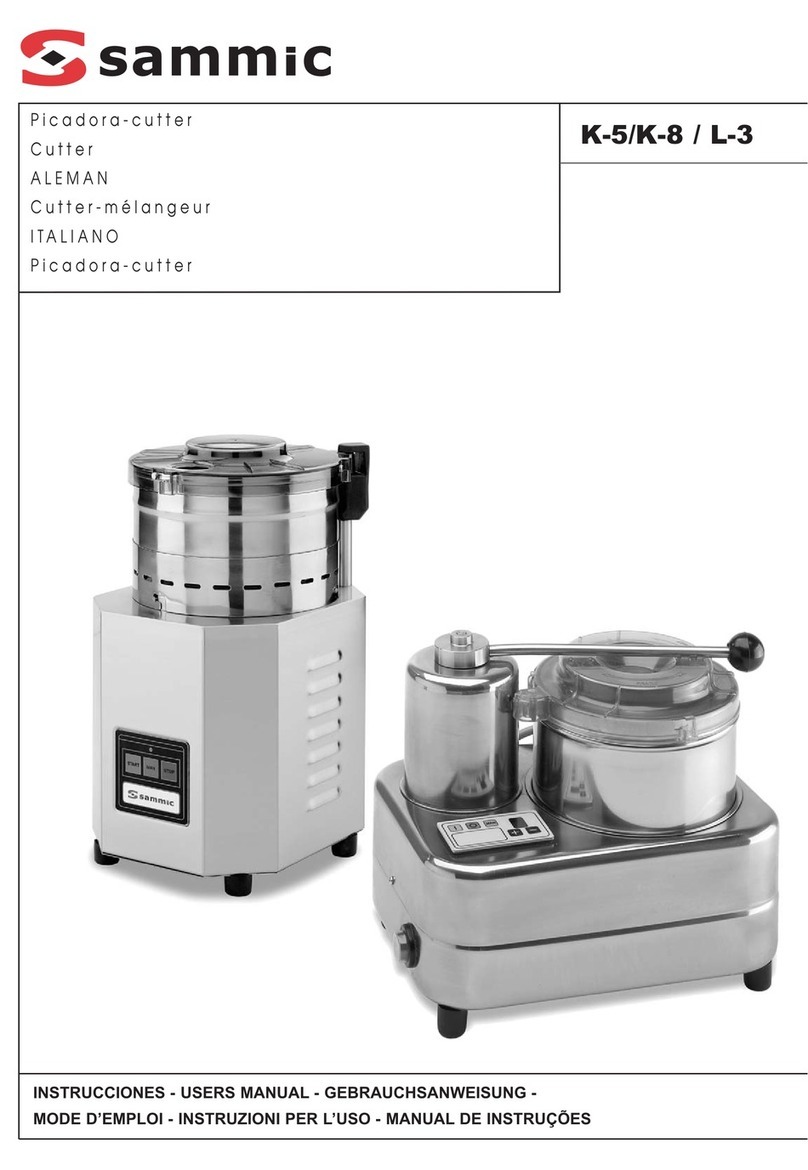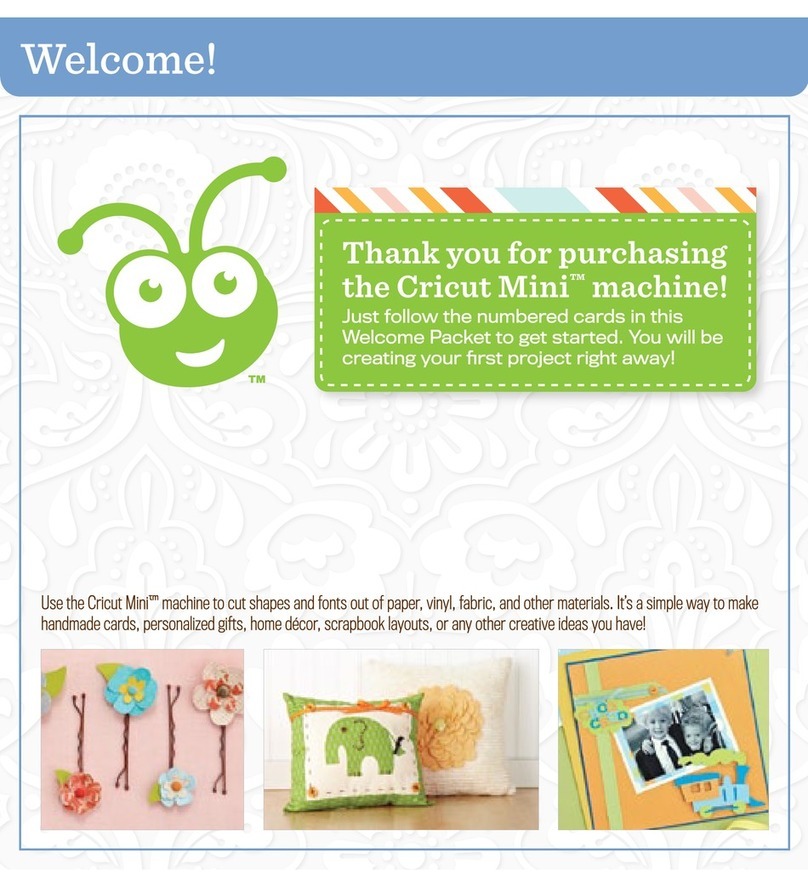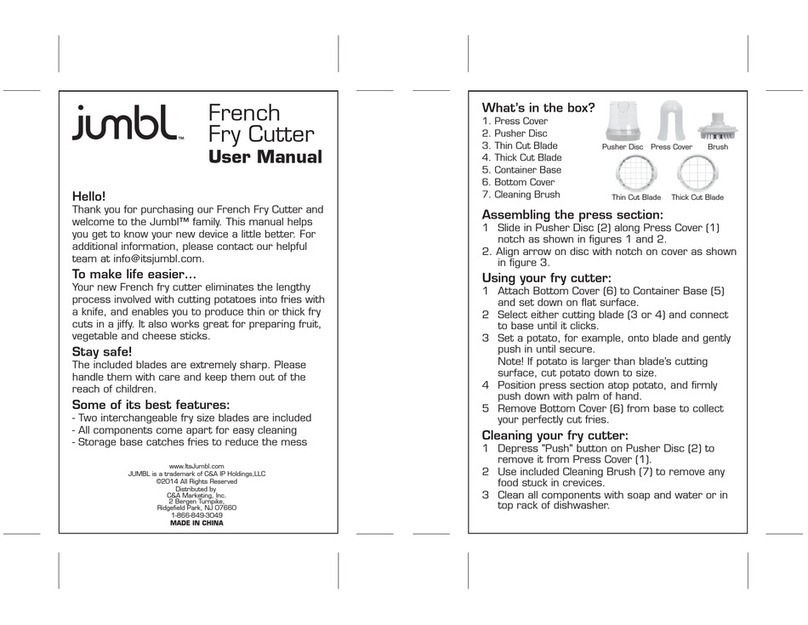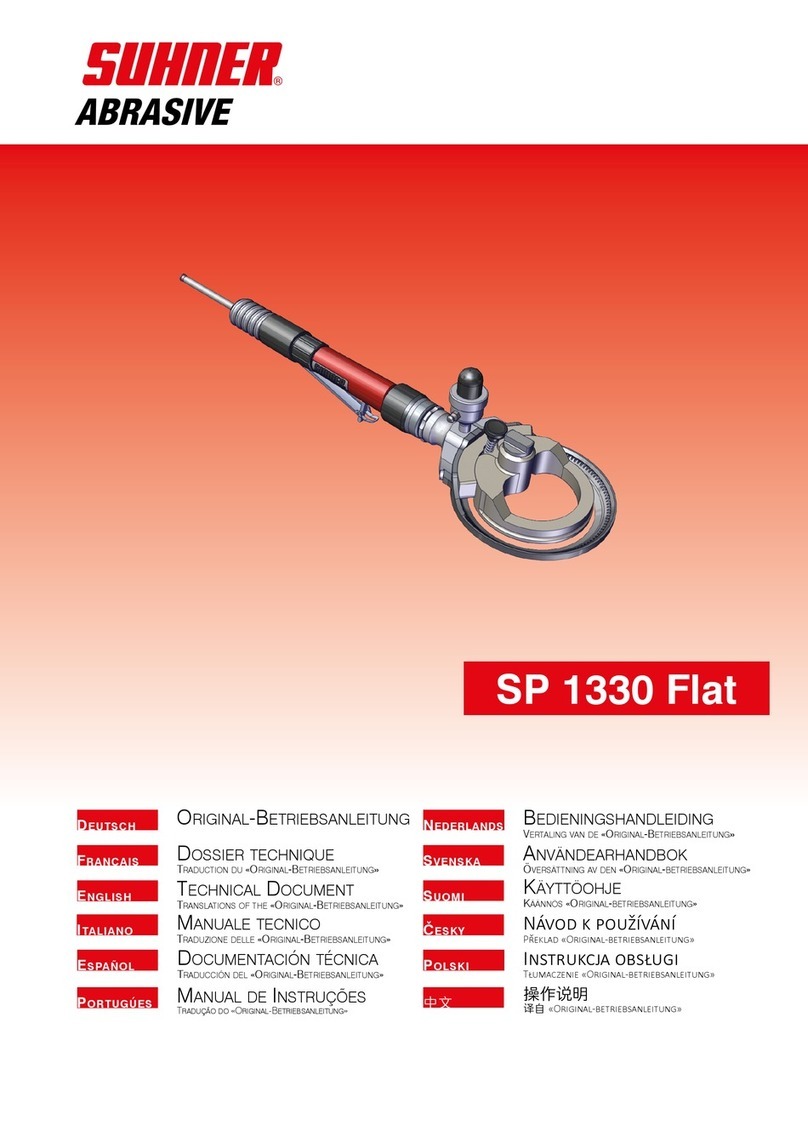Ariens HR1536FXPCE Owner's manual

Owner/Operator Manual – Manuel de L’Opérateur – Betriebsanlei-
tung – Gebruikshandleiding – Instruktionsbog – Instruktionsbok –
Käyttöohjekirja – Brukerhåndbok – Manuale del proprietario/opera-
tore – Manual del operador/propietario – Manual do Proprietário/
Operador – Руководство владельца/пользователя – Instrukcja
Obsługi / Operatora -
988316 - HR1536FXPCE
988319 - HR1544FXPCE (Rear Discharge)
988320 - HE1748FLPCE
Hydro Pro Series
00380400A 3/05
Printed in USA
ENGLISH
FRANÇAIS
DEUTSCH
NEDERLANDS
DANSK
SVENSKA
SUOMI
NORSK
ITALIANO
ESPAÑOL
PORTUGUESE
RUSSIAN
POLISH

2
Ariens Company
655 West Ryan Street
P.O. Box 157
Brillion, Wisconsin 54110-0157
USA
Telephone (920) 756-2141
Facsimile (920) 756-2407
EC DECLARATION OF CONFORMITY ISSUED BY THE MANUFACTURER – DÉCLARATION DE
CONFORMITÉ CE ÉMISE PAR LE FABRICANT – EU-ÜBEREINSTIMMUNGSERKLÄRUNG DES
HERSTELLERS – VERKLARING VAN OVEREENSTEMMING VOOR DE EU, AFGEGEVEN DOOR
DE FABRIKANT – EF OVERENSSTEMMELSESERKLÆRING UDSTEDT AF FABRIKANTEN –
DICHIARAZIONE DI CONFORMITÀ CE RILASCIATA DAL PRODUTTORE – DECLARACIÓN DE
CONFORMIDAD CE EMITIDA POR EL FABRICANTE – EF-SAMSVARSERKLÆRING FRA
PRODUSENTEN – EG-DEKLARATIONEN OM ÖVERENSSTÄMMELSE UTFÄRDAD AV
TILLVERKAREN – VALMISTAJAN ANTAMA EY-VAATIMUSTENMUKAISUUSVAKUUTUS –
DEKLARACJA ZGODNO
Ś
CI Z PRZEPISAMI EC WYDANA PRZEZ PRODUCENTA –
DECLARAÇÃO DE CONFORMIDADE CE EMITIDA PELO FABRICANTE –
We the undersigned, ARIENS COMPANY, certify that: Nous, soussignés ARIENS COMPANY, certifions que : Der Unterzeichnete,
ARIENS COMPANY, bescheinigt, dass: Wij, de ondergetekenden, ARIENS COMPANY, verklaren dat: Undertegnede, ARIENS
COMPANY, attesterer, at: La sottoscritta società ARIENS COMPANY certifica che: Nosotros, los abajo firmantes, ARIENS
COMPANY, certificamos que: Undertegnede, ARIENS COMPANY, bekrefter at: Undertecknad, ARIENS COMPANY, intygar att:
Allekirjoittanut, ARIENS COMPANY, vakuuttaa, että: My, niżej podpisani, ARIENS COMPANY, oświadczamy, że: Nós, abaixo
assinados, certificamos em nome da ARIENS COMPANY, que:
Type: Type : Typ: Type:
Type: Tipo: Tipo: Type:
Typ: Tyyppi: Typ: Tipo:
Walk Behind Lawn Mower – Tondeuse à gazon autotractée – Handgeführter Rasenmäher –
Duwgrasmaaier – Selvkørende plæneklipper – Tosaerba semovente – Cortacésped de empuje
manual – Gressklipper – Självgående gräsklippare – Käsinohjailtava ruohonleikkuri – Kosiarka
trawnikowa – Cortador de Relva Convencional –
Trade Name: Appellation commerciale : Handelsbezeichnung:
Handelsnaam: Firmanavn: Nome commerciale: Nombre comercial:
Handelsnavn: Handelsbeteckning: Kauppanimi: Nazwa handlowa:
Nome da Marca:
Model: Modèle : Modell: Model: Model: Modello: Modelo: Modell:
Modell: Malli: Model: Modelo:
Cutting Width:
Largeur de coupe : Schnittbreite: Maaibreedte:
Klippebredde: Larghezza di taglio: Ancho de corte: Klippebredde:
Klippbredd: Leikkuuleveys: Szerokość cięcia: Largura de corte:
Ariens
988316 988319 988320
89.5 cm 111.8 cm 120 cm
Conforms to: Est conforme à : Mit den Anforderungen der folgenden Richtlinien übereinstimmt: Voldoet aan: Er i overensstemmelse med: È
conforme a: Cumple con: Er i samsvar med: Överensstämmer med: Täyttää seuraavat vaatimukset: Jest zgodny z: De acordo com:
98/37/EC, 89/336/EEC;
2000/14/EC Conformity Assessment Annex VI. Annexe VI de l'évaluation de conformité. Konformitätsbewertung, Anhang VI. Bijlage VI
voor beoordeling van overeenstemming. Vurdering af overensstemmelse Anneks VI. Annesso VI della valutazione di conformità. Anexo
VI de la evaluación de la conformidad. Samsvarsvurdering etter vedlegg VI. Bedömning av överensstämmelse Bilaga VI.
Vaatimustenmukaisuuden arviointi, liite VI. Dodatek VI, Ocena zgodno
ś
ci. Anexo VI da Avaliação de Conformidade.
Representative Measured Sound Power Level (L
wa
) – Niveau de puissance
acoustique représentatif mesuré (L
wa
) – Repräsentativer gemessener
Geräuschpegel (L
wa
) – Representatief gemeten geluidsniveau (L
wa
) –
Repræsentativt, målt støjeffektniveau (L
wa
) – Livello di potenza sonora
rappresentativo rilevato (L
wa
) – Nivel de potencia acústica representativo
medido (L
wa
) – Representativt målt lydeffektnivå (L
wa
) – Representativ uppmätt
ljudnivå (L
wa
) – Tyypillinen mitattu äänitehotaso (L
wa
) – Zmierzony
reprezentatywny poziom mocy akustycznej (L
wa
) – Nível de Potência de Som
Medido Representativo (L
wa
)
Guaranteed Sound Power Level (L
wa
) – Niveau de puissance acoustique
garanti (L
wa
) – Garantierter Geräuschpegel (L
wa
) – Gegarandeerd
geluidsniveau (L
wa
) – Garanteret støjeffektniveau (L
wa
) – Livello di potenza
sonora garantito (L
wa
) – Nivel de potencia acústica garantizado (L
wa
) –
Garantert lydeffektnivå (L
wa
) – Garanterad uppmätt ljudnivå (L
wa
) – Taattu
äänitehotaso (L
wa
) – Gwarantowany reprezentatywny poziom mocy
akustycznej (L
wa
) – Nível de Potência de Som Garantido (L
wa
) –
988316
988319
988320
99 dBA
100 dBA
104 dBA
988316
988319
988320
100 dBA
100 dBA
105 dBA

3
CE Sound and Vibration – Bruits et vibrations CE –
CE Geräusch- und Vibrationswerte – CE Geluid en
trilling – CE støj og vibration – Livello sonoro e
vibrazioni CE – Sonido y vibración CE – CE-lyd og
-vibrasjon – CE ljudnivå och vibrationer –
CE, melu ja tärinä – CE Dźwięku i Wibracji – Som e
Vibração CE – (Ref. EN836-2001)
Notified Body – Organisme notifié – Zertifizierungsstelle –
Aangemelde instantie – Bemyndiget organ – Organismo
notificato – Organismo notificado – Teknisk kontrollorgan –
Anmält organ – Ilmoitettu laitos –
Organ zaświadczający
–
Organismo Certificador –
SNCH
11, Route de Luxembourg
L-5230 Sandweiler
Fred J. Moreaux:
Quality and Conformance Manager (Keeper of Technical File)
Responsable de la qualité et de la conformité des produits
(Dépositaire de la fiche technique)
Manager Qualitätssicherung
und Konformität
(Archivar der technischen Akte)
Kwaliteits- en
normalisatiemanager
(Beheerder van technische bestand)
Chef
for kvalitet og overensstemmelse
(Indehaver af tekniske data)
Responsabile della qualità e della conformità del prodotto
(Depositario del file tecnico)
Gerente de calidad y conformidad
(Depositario del archivo técnico)
Kvalitet- og samsvarsansvarlig
(innehaver av teknisk fil)
Chef för kvalitet och
produktöverensstämmelse
(Innehavare av tekniska data)
Laadusta ja vaatimustenmukaisuudesta vastaava johtaja
(Teknisen tiedoston haltija)
Kierownik do spraw jakości i
zgodności
(Przechowujący DokumentacjęTechniczną)
Gestor
de Qualidade e Conformidade
(Zelador de Arquivos Técnicos)
Ariens Company
Brillion, WI 54110-0157 USA
Signature Signature Unterschrift
Handtekening Underskrift Firma
Firma Signatur Namnteckning
Allekirjoitus Podpis Assinatura
3/14/2005
Date Date Datum
Datum Dato Data
Fecha Dato Datum
Päiväys Data Data
Model: Modèle : Modell: Model: Model: Modello: Modelo: Modell: Modell: Malli:
Model: Modelo: 988316 988319 988320
Oper. Ear Sound Pressure (L
pa
) in dB
A
– Pression acoustique aux oreilles de l’opérateur
(L
pa
) en dB
A
– Geräuschpegel am Ohr des Bedieners (L
pa
) in dB
A
– Geluidsdruk bij het
oor van de gebruiker (L
pa
) in dB
A
– Strøjtryk ved brugerens øre (L
pa
) målt i dB
A
–
Pressione sonora all’orecchio dell’operatore (L
pa
) in dB
A
– Presión de sonido en el oído
(L
pa
) in dB
A
– Lydtrykk ved førerens øre (L
pa
) inn dB
A
– Ljudeffekt vid förarens öron (L
pa
)
i dB
A
– Kuljettajan korvaan kohdistuva äänenpaine (L
pa
), dB
A
– Robocze ciśnienie
akustyczne na uchu (L
pa
) w decybelach
A
– Oper. Pressão do Som no Ouvido (L
pa
) em
dB
A
–
87 86 89
Vibration Measure (m/sec
2
) at Operator Mesure des vibrations (m/s
2
) au niveau de
l’opérateur Vibration (m/s
2
) an des Bedieners Gemeten trilling bij (m/sec
2
)
Vibrationsmålinger (m/s
2
) ved brugerens Vibrazioni percepite dall’operatore (m/sec
2
)
Medida de vibración (m/seg
2
) en el operador Vibrasjonsmåling (m/s
2
) ved førerens
Vibrationsmått (m/s
2
) vid förarens Tärinä (m/s
2
) kuljettajan Pomiar wibracji (m/sec
2
) u
operatora Medida de Vibração (m/seg.
2
) no Operador
Hands – Mains – Hände – De handen van de gebruiker – Hænder – Mani – Manos –
Hender – Händer – Käsissä – Ręce – Mãos –
X
Y
Z
1.8
1.3
1.8
2.0
2.1
1.6
1.6
3.2
1.8

GB-4
Safety . . . . . . . . . . . . . . . . . . . . . . . . . . . . . . . . . . . . . . 5
Assembly . . . . . . . . . . . . . . . . . . . . . . . . . . . . . . . . . . . 9
Controls and Features. . . . . . . . . . . . . . . . . . . . . . . . 10
Operation . . . . . . . . . . . . . . . . . . . . . . . . . . . . . . . . . . 11
Maintenance Schedule . . . . . . . . . . . . . . . . . . . . . . . 16
Service and Adjustments . . . . . . . . . . . . . . . . . . . . . 17
Storage. . . . . . . . . . . . . . . . . . . . . . . . . . . . . . . . . . . . 23
Troubleshooting . . . . . . . . . . . . . . . . . . . . . . . . . . . . 23
Service Parts . . . . . . . . . . . . . . . . . . . . . . . . . . . . . . . 24
Specifications . . . . . . . . . . . . . . . . . . . . . . . . . . . . . . 25
THE MANUAL
Before operation of unit, carefully and completely read your
manuals. The contents will provide you with an
understanding of safety instructions and controls during
normal operation and maintenance.
All reference to left, right, front, or rear are given from
operator standing in operation position and facing the
direction of forward travel.
MODEL AND SERIAL NUMBERS
When ordering replacement parts or
making service inquiries, know the Model
and Serial numbers of your unit and
engine.
Numbers are located on the product
registration form in the unit literature
package. They are printed on a serial
number label, located on the frame of
your unit.
• Record Engine Model and Serial numbers here.
PRODUCT REGISTRATION
The Ariens dealer must register the product at the time of
purchase. Registering the product will help the company
process warranty claims or contact you with the latest
service information. All claims meeting requirements during
the limited warranty period will be honored, whether or not
the product registration card is returned. Keep a proof of
purchase if you do not register your unit.
Customer Note: If the Dealer does not register your
product, please fill out, sign and return the product
registration card to Ariens or go to www.ariens.com on the
internet.
UNAUTHORIZED REPLACEMENT PARTS
Use only Ariens replacement parts. The replacement of any
part on this vehicle with anything other than an Ariens
authorized replacement part may adversely affect the
performance, durability, or safety of this unit and may void
the warranty. Ariens disclaims liability for any claims or
damages, whether warranty, property damage, personal
injury or death arising out of the use of unauthorized
replacement parts. To locate your nearest Ariens Dealer, call
1-920-756-4664 or go to www.ariens.com on the internet.
DISCLAIMER
Ariens reserves the right to discontinue, make changes to,
and add improvements upon its products at any time without
public notice or obligation.The descriptions and
specifications contained in this manual were in effect at
printing. Equipment described within this manual may be
optional. Some illustrations may not be applicable to your
unit.
DEALER DELIVERY
Dealer should:
1. Check all controls for proper function.
2. Check the safety interlock system to make sure that it
is functioning properly. (See Check Safety Interlock
System on page 11.)
3. Fill out Original Purchaser Registration Card and
return the card to Ariens.
4. Explain Limited Warranty Policy.
5. Explain recommended lubrication and maintenance.
Advise customer on adjustments.
6. Instruct customer on controls and operation of unit.
Discuss and emphasize the Safety Precautions. Give
customer Owner/Operator, Parts, and Engine
Manuals. Advise customer to thoroughly read and
understand them.
TABLE OF CONTENTS
INTRODUCTION
Transfer
model & serial
number label
from product
registration
here.
Serial
Number
Label
Figure 1 OG1400
© Copyright 2005 Ariens Company

GB - 5
SAFETY ALERTS
Look for these symbols to point out important
safety precautions. They mean:
Attention!
Personal Safety Is Involved!
Become Alert!
Obey The Message!
The safety alert symbols above and signal words below are
used on decals and in this manual.
Read and understand all safety messages.
NOTATIONS
NOTE: General reference information for proper operation
and maintenance practices.
IMPORTANT: Specific procedures or information required to
prevent damage to unit or attachment.
PRACTICES AND LAWS
Practice usual and customary safe working precautions, for
the benefit of yourself and others. Understand and follow all
safety messages. Be alert to unsafe conditions and the
possibility of minor, moderate, or serious injury or death.
Learn applicable rules and laws in your area, including those
that may restrict the age of the operator.
REQUIRED OPERATOR TRAINING
Original purchaser of this unit was instructed by the seller on
safe and proper operation. If unit is to be used by someone
other than original purchaser; loaned, rented or sold,
ALWAYS provide this manual and any needed safety
training before operation.
SAFETY DECALS AND LOCATIONS
ALWAYS replace missing or damaged Safety Decals. Refer
to figures below for Safety Decal locations.
SAFETY
WARNING: This cutting machine is capable
of amputating hands and feet and throwing
objects. Failure to observe the safety
instructions in the manuals and on decals
could result in serious injury or death.
Slopes are a major factor related to
loss-of-control and tip-over accidents.
Operation on all slopes requires extra
caution.
Tragic accidents can occur if the operator is
not alert to the presence of children. Never
assume that children will remain where you
last saw them.
Gasoline is extremely flammable and the
vapors are explosive, handle with care.
Disengage attachment, stop unit and engine,
remove key, engage parking brake, and allow
moving parts to stop before leaving
operator’s position.
DANGER: IMMINENTLY HAZARDOUS
SITUATION! If not avoided, WILL RESULT
in death or serious injury.
WARNING: POTENTIALLY HAZARDOUS
SITUATION! If not avoided, COULD
RESULT in death or serious injury.
CAUTION: POTENTIALLY HAZARDOUS
SITUATION! If not avoided, MAY RESULT in
minor or moderate injury. It may also be
used to alert against unsafe practices.
Figure 2
1
2
3
4
OG1820
2
Figure 3
2
1
OG2050
2
4

GB-6
1. Danger! To avoid serious injury or death
2. Danger! Rotating Blades
3. Warning!
4. Danger!
SAFETY RULES
Read, understand and follow all safety practices in
Owner/Operator Manual before beginning assembly. Failure
to follow instructions could result in personal injury and/or
damage to unit.
ALWAYS remove key (if equipped) and disconnect wire from
spark plug before assembly. Unintentional engine start up
can cause death or serious injury.
Complete a walk around inspection of unit and work area to
understand:
• Work area
• Your unit
• All safety decals
ALWAYS check overhead and side clearances carefully
before operation.
ALWAYS be aware of traffic when operating along streets or
curbs.
Keep children and people away.
Keep children out of work area and under watchful care of a
responsible adult.
Keep area of operation clear of all toys, pets, and debris.
Thrown objects can cause injury.
Check for weak spots on docks, ramps or floors. Avoid
uneven work areas and rough terrain.
ALWAYS be sure of your footing. Keep a firm hold on
handlebar. Walk, NEVER run.
DO NOT operate on wet grass.
Dust, smoke, fog, etc. can reduce vision and cause an
accident. Operate unit only when there is good visibility and
light.
Read the operator’s manual.
Keep children and others away from unit
while operating.
Never direct discharge toward other people.
Thrown objects can cause injury.
• Keep safety devices (guards, shields, switches, etc.)
in place and working.
• Check interlock system per manual before use.
• Never allow operation by untrained persons.
• When parking on a slope always engage parking
brake.
• Disengage PTO, stop unit and engine, set parking
brake and remove key before making any
inspections, repairs, etc.
ROTATING BLADE! Keep hands and feet
away.
Always stand clear of discharge area. DO NOT
direct discharge toward other people. Remove
objects that could be thrown by the blade. DO
NOT operate mower over gravel and hard
surfaces.
Keep people and pets away when operating
unit. Keep children out of the work area and
under the watchful care of a responsible adult.
Shut off engine, remove key, read manual
before you unplug, adjust or repair unit.
NO STEP! Always keep feet away from
rotating parts.
OL1801
OL4370
OL0910
OL303
0
OL0910
OL4370
OL4010
OL4420
Always stand clear of discharge.
DO NOT operate mower unless guards are in
operating position or bagger is attached.
Stay clear of rotating parts.
OL0910
OL3320
OL5100

GB - 7
Read the entire Owner/Operator manual and other training
material. If the operator or the mechanic cannot read the
manual, it is the owner’s responsibility to explain it to them.
Only the user can prevent and is responsible for accidents or
injuries occurring to themselves, other people or property.
• Only trained adults may operate or service unit
• Training includes actual operation
NEVER allow children to operate or play on or near unit.
Be alert and shut off unit if children enter area.
Never carry passengers.
NEVER operate unit after or during the use of medication,
drugs or alcohol. Safe operation requires your complete and
unimpaired attention at all times.
NEVER allow anyone to operate this unit when their
alertness or coordination is impaired.
Wear adequate safety gear, protective gloves and footwear.
NEVER wear open sandals or canvas shoes during
operation.
Protect eyes, face and head from objects that may be
thrown from unit. Wear appropriate hearing protection.
Sharp edges can cut. Moving parts can cut off fingers or a
hand. Wrap blade(s), wear sturdy gloves and use extreme
caution when servicing. On multi-blade mowers, rotation of
one blade will cause all blades to rotate.
ALWAYS keep hands and feet away from all rotating parts
during operation. Rotating parts can cut off body parts.
ALWAYS keep hands away from all pinch points.
DO NOT touch unit parts which might be hot from operation.
Allow parts to cool before attempting to maintain, adjust or
service.
NEVER place your hands or any part of your body or
clothing inside or near any moving part while unit is running.
DO NOT wear loose clothing or jewelry. Tie back hair that
may get caught in rotating parts.
Keep children and people away from unit during operation.
Fumes from engine exhaust can cause injury or death.
DO NOT run engine in an enclosed area. Always provide
good ventilation.
Thrown objects can cause injury and property damage. DO
NOT point discharge at anyone or discharge directly onto
paved or gravel surfaces.
Always stand clear of the discharge area when operating
this unit.
Read, understand, and follow all instructions in the manual
and on the machine before starting. Understand:
• How to operate all controls
• The functions of all controls
• How to STOP in an Emergency
• Braking and steering characteristics
• Turning radius and clearance
ALWAYS keep protective structures, guards, and panels in
good repair, in place and securely fastened.
NEVER modify or remove safety devices.
ALWAYS keep discharge cover or complete grass catcher in
place and in proper working condition.
Check steering control operation frequently. Adjust and
service as required.
Safety Interlock System must function properly. DO NOT
operate unit if operator presence control is damaged or
disabled.
If you strike an object, or if equipment vibrates abnormally,
stop engine at once, disengage PTO, wait for all moving
parts to stop, and remove key. Check for any damage or
loose parts. Repair before restart.
Before starting engine: disengage PTO, engage parking
brake and place unit in neutral.
DO NOT operate at too fast a rate. DO NOT change engine
governor settings or over-speed engine. Slow down and turn
corners slowly.
Disengage PTO when attachment is not in use. DO NOT
raise deck with blades running. ALWAYS turn off power to
attachment when travelling, crossing driveways, etc.
Avoid uneven and rough terrain. DO NOT operate near
drop-offs, ditches, or embankments. Unit can suddenly turn
over if a wheel is over the edge of a cliff or ditch, or if an
edge caves in.
DO NOT try to stabilize unit by putting foot on ground when
operating with applicable riding attachments.
When engine is running and speed control lever is forward,
holding only one steering lever will cause unit to circle
around one drive wheel.
Use care when approaching blind corners, shrubs, trees or
other objects that may obscure view.
ALWAYS disengage PTO, stop unit and engine, set parking
brake, remove key and allow moving parts to stop before
clearing clogs or cleaning unit.
Never leave a running unit unattended. ALWAYS shut off
engine before leaving unit.
ALWAYS remove key to prevent unauthorized use.
DO NOT operate in reverse unless absolutely necessary.
ALWAYS backup slowly. ALWAYS look down and behind,
before and while backing.
DO NOT operate on steep slopes. DO NOT operate on
slopes of more than 10°. Operate across the face of slopes,
not up and down.
Turf conditions can affect the unit’s stability.
Keep all movement on slopes slow and gradual. DO NOT
make sudden changes in speed or direction. Use a slow
speed to avoid stopping or shifting on slopes. Avoid starting
or stopping on a slope.
DO NOT park unit on a slope unless absolutely necessary.
When parking on a slope always engage parking brake and
block wheels.
Use extra care when loading or unloading unit onto trailer or
truck.

GB-8
Secure unit chassis to transport vehicle. NEVER secure
from rods or linkages that could be damaged.
DO NOT transport machine while engine is running.
Keep unit free of grass, leaves, or other debris. Clean up oil
or fuel spills.
This product is equipped with an internal combustion engine.
DO NOT use on or near any unimproved, forest covered or
brush covered land unless the exhaust system is equipped
with a spark arrester meeting applicable local, state or
federal laws. A spark arrester, if used, must be maintained in
effective working order by the operator.
Fuel is highly flammable and its vapors are explosive.
Handle with care. Use an approved fuel container.
No smoking, No sparks, No flames. ALWAYS allow engine to
cool before servicing.
NEVER fill fuel tank when engine is running or hot from
operation.
NEVER fill or drain fuel tank indoors.
Replace fuel cap securely and clean up spilled fuel.
Never fill containers inside a vehicle or on a truck or trailer
bed with a plastic liner. Always place containers on the
ground away from your vehicle before filling.
When practical, remove gas-powered equipment from the
truck or trailer and refuel it on the ground. If this is not
possible, then refuel such equipment on a trailer with a
portable container, rather than from a gasoline dispenser
nozzle.
Keep the nozzle in contact with the rim of the fuel tank or
container opening at all times until fueling is complete. Do
not use a nozzle lock-open device.
If fuel is spilled on clothing, change clothing immediately.
NEVER store fuel inside where there is an open flame, such
as a water heater.
Avoid Electric Shock. Objects contacting both battery
terminals at the same time may result in injury and unit
damage. DO NOT reverse battery connections.
Reverse connections may result in sparks which can cause
serious injury. Always connect positive (+) lead of charger to
positive (+) terminal, and negative (-) lead to negative (-)
terminal.
ALWAYS disconnect negative (-) cable FIRST and positive
(+) cable SECOND. ALWAYS connect positive (+) cable
FIRST, and negative (-) cable SECOND.
Explosive Gases from battery can cause death or serious
injury. Poisonous battery fluid contains sulfuric acid and its
contact with skin, eyes or clothing can cause severe
chemical burns.
No flames, No sparks, No smoking near battery.
ALWAYS wear safety glasses and protective gear near
battery. Use insulated tools.
DO NOT TIP battery beyond a 45° angle in any direction.
Battery posts, terminals and related accessories contain
lead and lead compounds, chemicals known to the State of
California to cause cancer and reproductive harm. Wash
hands after handling.
Reverse connections may cause sparks which may result in
injury. ALWAYS connect/disconnect cables in proper order.
Poisonous battery fluid contains sulfuric acid and its contact
with skin, eyes, or clothing can cause severe burns.
Explosive Gases! No flames, No sparks, No smoking near
battery.
ALWAYS wear safety glasses and protective gear near
battery.
ALWAYS keep batteries out of reach of children.
Before making any inspections, repairs, etc.: disengage
PTO, stop unit and engine, set parking brake, remove key,
allow moving parts to stop.
ALWAYS keep body and hands away from pin holes or
nozzles which eject hydraulic fluid under pressure.
Allow hot parts to cool.
ALWAYS block wheels, engage parking brake and know all
jack stands are strong, secure and will hold weight of unit
during maintenance.
An extension spring, when extended, stores energy and can
be dangerous. Always use tools specifically designed for
installing or removing an extension spring. Always compress
or extend springs slowly.
ALWAYS maintain unit in safe operating condition. Damaged
or worn out muffler can cause fire or explosion.
Keep hardware, especially blade attachment bolts, tight.
Maintain or replace safety and instruction labels, as
necessary.
For unit storage or extended storage:
• NEVER store with fuel in fuel tank, inside a building
where any ignition sources are present.
• Allow engine to cool completely.
Use only attachments or accessories designed for your unit
and that can be used safely on your terrain.
Check attachment components frequently for wear, damage
or deterioration. Replace with manufacturer’s recommended
parts for safety.
To reduce fire hazard and overheating, keep equipment free
of grass, leaves, debris or excessive lubricants.
Use extra care with grass catchers and other attachments.
These can change the stability of the unit. Use only
approved hitch points.
ALWAYS be aware of attachments when turning. ALWAYS
allow adequate clearance between attachments, personnel,
and other objects.

GB - 9
1. Remove the unit from shipping container.
2. Adjust tire pressure to 8 to 16 psi (55 to 110 kPa).
3. Service and connect battery. See Charge Battery on
page 21.
4. Check the adjustments outlined in Service &
Adjustments.
5. Check engine oil level. See engine manual.
6. Check hydraulic fluid level. See Maintenance.
7. Add clean fuel to the fuel tank. See engine manual for
type and grade.
8. Check for loose hardware.
9. Be sure that safety interlock system operates correctly.
See Check Safety Interlock System on page 11.
10. Be sure that unit tracks straight.
Unit must not pull sharply to the left or right when the
speed control levers are pushed quickly forward.
Unit must not pull sharply to the left or right when the
steering levers are released. See TRACKING
ADJUSTMENT on page 18.
ASSEMBLY
WARNING: AVOID INJURY. Read and
understand the entire Safety section before
proceeding.

GB-10
1. Operator Presence Control Lever
2. Parking Brake
3. Choke Control
4. Throttle Lever
5. PTO Switch
6. Hourmeter
7. Fuel Cap
8. Hydraulic Fluid Tank
9. Recoil Starter Handle
10. Cold Start Disengage
11. Ignition Switch
12. Bypass Valve Levers
13. Control Levers
14. Control Stop Lock Lever
15. Pivot Bar
16. Muffler Guard
17. Mower Lock Pin
18. Oil Light (988320)
19. Battery (988320)
CONTROLS AND FEATURES
Figure 4
1
23
13
15
11
1
14
5
8
4
6
12
12
7916
17
10
14
19
18

GB - 11
CONTROLS AND FEATURES
See Figure 4 for controls and features locations.
SAFETY INTERLOCK SYSTEM
Check Safety Interlock System
Test the safety interlock system at each operation. If the
system does not function properly, do not operate the unit
until repairs are made.
The engine will only start with the PTO disengaged, the
speed control levers in neutral and the parking brake on.
To test:
1. With engine off, set controls as listed in line A of the
table below and try to start the engine.
IMPORTANT: If the system does not function properly, do
not operate the unit until repairs are made.
2. Repeat step 1 for lines B-E of the table.
*Test the left and right operator presence controls
separately.
3. With engine running, set controls as listed in line A of
the table below and check the result.
IMPORTANT: If the system does not function properly, do
not operate the unit until repairs are made.
4. Repeat step 3 for lines B-E of the table.
*Perform this test with PTO properly engaged.
**Release both operator presence controls for this test.
NOTE: PTO should only engage when the parking brake is
off AND at least one operator presence control is engaged.
PTO should disengage when BOTH operator presence con-
trols are released.
Operator Presence Control
The operator presence control levers must be depressed to
operate the PTO. When the PTO is engaged, releasing the
operator presence control levers stops the mower blades.
Control Levers
The control levers are used to steer, operate in forward and
reverse, and stop the unit. Push forward to move forward.
Pull back to move in reverse.
Ignition Switch (988320)
Operate the ignition switch with the removable
key. The switch has three positions: Off (1), On
(2) and Start (3). To start the engine, turn the
key to Start, then release to On. To stop the
engine, turn the key to Off.
OPERATION
WARNING: AVOID INJURY. Read and
understand the entire Safety section before
proceeding.
DANGER: SAFETY INTERLOCK SYSTEM
FAILURE and improper operation of unit can
result in death or serious injury. ALWAYS know
the safety interlock system is operating
properly. See Check Safety Interlock System on
page 11 for testing instructions.
ENGINE OFF TEST
PARKING BRAKE
OPERATOR
PRESENCE CONTROL*
PTO
ENGINE
AOn On Off Starts
BOn Off Off Starts
COff Off Off Doesn’t Start
DOff On Off Doesn’t Start
EOff Off On Doesn’t Start
ENGINE RUNNING TEST
PARKING BRAKE
OPERATOR
PRESENCE CONTROL
PTO
ENGINE
AOn Off Won’t
Engage Runs
B* On Off Disengages Runs
COff On Engages Runs
D* Off Off** Engaged Stops
Running
EOff Off Off Stops
Running
CAUTION: AVOID INJURY. Operate only when
operator presence control is functioning
correctly. See Check Safety Interlock System on
page 11 for testing instructions.
WARNING: AVOID INJURY. When the engine is
running , moving only one lever causes the unit
to circle around one drive wheel.
ALWAYS move levers slowly.
1
3
2
OF1210

GB-12
Ignition Switch (988316, 319)
Operate the ignition switch with the removable
key. The switch uses two positions: Off (1) and
On (2). To start the engine, turn the key to On
(2) and pull the recoil handle. To stop the
engine, turn the key to Off (1).
Throttle Lever
The throttle lever changes the speed of the
engine. Move the throttle lever to Fast (1) to
increase engine speed. Move the lever to Slow
(2) to decrease engine speed.
Choke Control
Use the choke control to start a cold engine. Pull
the control out to choke the engine. Push the
control in when the engine gets warm.
PTO Clutch
Pull the PTO (power take off) switch past On (1) to Reset (2)
to engage the mower blades. Push the PTO switch Off (3) to
disengage the mower blades.
NOTE: Pull PTO switch to Reset (2) to engage mower
blades after operator presence control has been released.
Parking Brake
The parking brake holds the tractor in position
when not in use.
To engage parking brake, pull the brake handle
back (1).
To release parking brake, push the brake handle
forward (2).
Recoil Starter Handle
Pull the recoil starter handle to start the engine.
Hour Meter
Recoil Start: The hour meter measures the
number of hours the engine has been run.
Oil Pressure Light (988320)
The red light near this symbol comes on when
the engine is running and engine oil pressure is
low. Check oil level and add if necessary. See
Engine Manual.
Cold Start Disengage
Use the cold start disengage for easier starting on cold days.
1. Pull out cold start chain 1 to 4 links and lock chain in
frame notch (Figure 5).
2. Start engine and allow engine to warm to operating
temperature.
3. Slowly release chain from notch.
FILL FUEL TANK
OF1212
OG1180
1
2
OG1190
OE0261
1
2
3
1
2
WARNING: AVOID INJURY. Unit will move if
steering controls are engaged when cold start
feature is released.
WARNING: Fuel is highly flammable and its
vapors are explosive. Handle with care. Use an
approved fuel container.
NO smoking, NO sparks, NO flames. ALWAYS
allow engine to cool before servicing.
NEVER fill fuel tank when engine is running or
hot from operation.
NEVER fill or drain fuel tank indoors.
Replace fuel cap securely and clean up spilled
fuel.
OG0620
OG0600
Figure 5
OG1320
Cold Start
Disengage
Notch

GB - 13
Add fuel to the fuel tank as needed. See engine manual for
type and grade of fuel.
To add fuel to the fuel tank:
1. Put the unit in an open area.
2. Stop the engine.
3. Allow engine to cool.
4. Clean the fuel cap and the area around the fuel cap to
prevent dirt from entering the fuel tank.
5. Remove the cap from the fuel tank.
6. Fill the fuel tank. Be careful not to spill.
7. Install the cap on the fuel tank and tighten.
8. Clean up any spilled fuel before starting the engine.
TO STOP IN AN EMERGENCY
1. Release operator presence control(s).
2. Turn the ignition key Off.
3. Allow engine to stop completely.
4. Engage parking brake.
STARTING AND SHUT OFF
Before Each Use
Check each item in Each Use in the Maintenance Schedule.
Recoil Start
1. Engage the parking brake.
2. Bring control levers to neutral.
3. Move PTO switch to Off.
4. Set throttle to the proper starting position. If the engine
is cold, choke the engine.
5. Turn ignition switch to On.
6. Grasp recoil starter handle and pull rope out slowly
until it pulls harder. This is the compression stroke.
7. Let the rope rewind slowly.
8. Pull rope with rapid continuous full arm stroke to start
engine. Allow rope to rewind slowly.
IMPORTANT: DO NOT let starter handle snap against
engine.
9. Repeat until engine starts. (If engine does not start,
refer to Engine Manual.)
10. After engine starts, adjust choke as needed. Allow
engine to warm and run smoothly before operating
unit.
Electric Start (988320)
To start the engine:
1. Engage parking brake.
2. Bring control levers to neutral.
3. Move PTO switch to Off.
4. If the engine is cold, choke the engine.
5. Move the throttle to Fast.
6. Put the ignition key in the switch and turn it to Start.
IMPORTANT: DO NOT operate starter motor more than 15
seconds per minute, as overheating and damage can occur.
If engine will not start, refer to Troubleshooting or Engine
Manual.
7. When the engine starts, release the key to Run
position.
8. After engine starts, adjust choke as needed. Allow
engine to warm and run smoothly before operating
unit.
Shut Off
1. Bring control levers to neutral.
2. Move the throttle lever to Slow.
3. Engage parking brake.
4. Turn the ignition key Off.
5. Allow engine to stop completely.
TO OPERATE UNIT
Operate the unit only in the operator’s position directly
behind the handlebars.
To operate:
1. Start the engine (See STARTING AND SHUT OFF on
page 13).
2. Move the throttle lever to the Fast position.
3. Engage operator presence control.
• To move straight forward, slowly push control levers
forward.
• To stop unit motion, allow control levers to return to
neutral.
WARNING: AVOID INJURY. When the engine
is running , using one steering control lever
causes the unit to circle around one drive
wheel.
ALWAYS hold both steering levers when
operating unit and move levers slowly.
OG1600
OG1610

GB-14
• To turn to the left, push the right hand control lever
forward.
• To turn to the right, push the left hand control lever
forward.
• To move in reverse, pull both control levers backward,
past the neutral position. Pulling the levers farther back
increases reverse speed.
To mow:
1. Move the throttle lever to the fast position.
2. Engage operator presence control(s).
NOTE: Operator presence control must remain engaged.
3. Move the PTO switch to On to engage mower.
IMPORTANT: NEVER engage the PTO if the mower is
plugged with grass or other material. This will damage the
PTO belt.
4. Push control levers forward slowly.
When you know how to operate the unit, select a speed
appropriate to your mowing conditions.
To stop mowing:
1. Allow control levers to return to neutral.
2. Move the throttle lever to 1/2 speed.
3. Turn off PTO switch.
CUTTING HEIGHT ADJUSTMENT
Fixed Decks
1. Shut off the unit. See Shut Off on page 13 and "To stop
mowing."
2. Lift deck by handle until mower lock pins can be pulled
out of holes.
3. Turn latches slightly so they can’t snap back into place.
4. Set deck to desired cutting height (Figure 6).
5. Place mower lock pins into desired hole.
IMPORTANT: Make sure lock pins are fully engaged.
6. Repeat adjustment for other side of deck.
Floating Decks (988320)
1. Shut off the unit. See Shut Off on page 13 and "To stop
mowing."
2. Lift deck by handle until hair pins can be removed from
height adjustment rods.
3. Set deck to desired cutting height (Figure 7).
4. Insert hair pins into appropriate holes on height
adjusting rods.
5. Repeat adjustment for other side of deck.
NOTE: It may be necessary to adjust cutting height in steps
to keep deck from binding.
WARNING: Uncontrolled reverse travel can
result in serious injury.
Do not put control levers into the reverse
position unless you are prepared to operate in
reverse.
OG1630
OG1640
OG1650 Figure 6 OG1380
Fixed Deck Cutting Heights
Figure 7 OG1385
Floating Deck Cutting Heights

GB - 15
LAWN STRIPER ADJUSTMENT (48" decks)
The striper drags behind the deck and shapes grass as you
mow.
Adjust the striper to match cutting height.
Short grass (deck low): mount from bottom holes.
Tall grass (deck high): mount from top holes.
PARKING
1. Shut off the unit. See Shut Off on page 13 and "To stop
mowing."
2. Remove the key.
3. Lock pivot bar against control levers.
4. Chock or block the wheels if parked on a slope.
TO PUSH UNIT BY HAND
To move the unit without the engine running:
1. Rotate the bypass valve levers located on the back
side of the pumps approximately 1/2 turn
counterclockwise.
2. Release parking brake.
3. Push unit to desired location.
4. Rotate the bypass valve levers located on the back
side of the pumps approximately 1/2 turn clockwise to
operate the unit.
IMPORTANT: Towing the unit will damage hydraulic motors.
TO TRANSPORT UNIT
ALWAYS shut off engine, remove key and drain fuel when
transporting unit on a truck or trailer. Use extra care when
loading or unloading unit.
Engage parking brake.
Secure unit chassis to transport vehicle. NEVER secure
from rods or linkages that could be damaged.
DO NOT transport machine while engine is running.

GB-16
*Change oil after first 8 hours of operation and every 100
hours thereafter.
** Change Hydraulic Fluid after first 50 hours of operation
and every 500 hours thereafter.
MAINTENANCE SCHEDULE
Period Service Task
Each Use
Check Safety Interlock System WARNING: Safety interlock system failure and improper operation of unit
can result in death or serious injury. Test this system each time the unit is
operated. If this system does not function as described, do not operate until
repairs are made. See Check Safety Interlock System on page 11.
Check Air Cleaner Check the air cleaner element before each use. See engine manual for
detailed instructions.
Check Engine Oil Check the engine oil level before each use. Never operate the engine when
the oil level is low. See engine manual for detailed instructions.
Check Engine Cooling Check the engine air cooling system before each use. See engine manual for
detailed instructions.
Check Fasteners Check all nuts, bolts, and other fasteners before each use. Replace missing
or damaged fasteners.
Check Tire Pressure Check tires for proper inflation, excessive wear or damage before each use.
The correct air pressure is 8 to 16 psi (55 to 110 kPa).
Check Hydraulic Fluid Level Check hydraulic oil level mark on cap/dipstick. Add 15W-50 synthetic oil as
needed. Do not overfill.
Follow Engine Manual
Maintenance Schedule Perform scheduled engine maintenance. See engine manual for detailed
instructions.
Check Battery Keep battery and its terminals clean.
Every 25
Hours
Check All Belts Replace worn or deteriorated belts.
Mower Blades Check mower blades for wear. Sharpen or replace as needed.
Clean Air Cleaner Foam
Element See engine manual for detailed instructions.
Every 50
Hours General Lubrication All all pivot points and pin connections. Grease lube fittings.
Every 100
Hours
Change Engine Oil Open the petcock to drain oil through oil drain hole on the left side of engine.
See engine manual for addional instructions.
Check Fuel Filter See engine manual for detailed instructions.
Check Spark Plug See engine manual for detailed instructions.
Check Muffler Check muffler for damage or wear. Replace if necessary.
Clean Air Cleaner Paper
Element See engine manual for detailed instructions.
Every 500
Hours Change Hydraulic Fluid and
Filter Drain hydraulic tank, replace hydraulic oil filter, refill system.

GB - 17
HYDRAULIC FLUID
Check Hydraulic Fluid Level
Check the hydraulic fluid level with the dipstick before each
use (more often if leaks are observed). Stop the engine
before servicing any hydraulic parts.
1. Run unit until warm.
2. Shut off engine.
3. Unscrew tank cap to remove cap/dipstick.
NOTE: Do not allow any dirt to get into the system.
4. Wipe dipstick clean.
5. Screw cap/dipstick back into tank.
6. Remove cap/dipstick and check hydraulic oil level
mark.
7. Add hydraulic fluid as needed. Do not overfill. See
Specifications for hydraulic fluid type.
Change Hydraulic Fluid and Filter
Change hydraulic fluid and filter after the first 50 hours of
operation. They both should be changed every 500 hours
thereafter.
To change the hydraulic fluid and filter:
1. Place open container under tank. The container should
be able to hold at least 4 quarts (3.8 L) of oil.
2. Remove tank from frame and allow tank to tip rearward
to allow oil to drain from system (Figure 8).
3. After most of the oil has drained, turn the tank upside
down counterclockwise to allow the rest of the oil to
drain.
4. Clean around filter.
5. Turn filter counterclockwise to remove.
6. Fill the new oil filter with about 8 oz. (236 ml) of
hydraulic oil.
7. Apply a thin coat of oil onto seal of new filter.
8. Install new filter and hand tighten securely.
9. Fill system with about 44 oz. (1.3L) fresh, clean
hydraulic oil. See Specifications for proper type.
10. Run-in hydraulic system to bleed and lubricate
components. See below.
Hydraulic Run-In Procedure
1. Jack the drive wheels off the floor.
2. Start unit. Run engine at slowest speed for 1-2 minutes
to bleed hydraulic pumps.
3. Increase engine speed to half. Set speed control 1/3
forward. Run engine for 3-5 minutes to bleed hydraulic
motors.
NOTE: If necessary, start the motors turning by hand.
4. Shut off engine and lower the unit to the floor.
IMPORTANT: If any squealing noise occurs in the motors,
repeat the run-in procedure.
SERVICE AND ADJUSTMENTS
WARNING: AVOID INJURY. Read and
understand the entire Safety section before
proceeding.
WARNING: HYDRAULIC FLUID UNDER
PRESSURE can penetrate skin and cause
severe burns that can result in death or serious
injury.
ALWAYS keep body and hands away from pin
holes or nozzles which eject hydraulic fluid
under pressure. ALWAYS use paper or
cardboard and not hands to search for leaks.
KNOW that all hydraulic fluid connections are
tight and all hydraulic hoses and lines are in
good condition BEFORE applying pressure to
system.
Foreign fluid injected into skin must be
surgically removed within a few hours by a
doctor familiar with this form of injury or
gangrene may result.
FULL Mark
Operating
Range
OE0380
Figure 8

GB-18
GENERAL LUBRICATION
Apply a small amount of oil to the pivot points as required for
smooth operation (Figure 9).
Apply high quality lithium based grease to all lube fittings
every 50 hours of operation.
NOTE: The mower spindle assembly is maintenance free.
TRACKING ADJUSTMENT
Check Forward Tracking
1. Start engine and run unit at full throttle.
2. Slowly push both control levers against the pivot bar.
3. Note which direction, if any, the unit pulls.
4. Stop unit and engine.
5. Adjust tracking if needed.
Try each of the following steps until the unit tracks straight. It
may not be necessary to perform all the steps.
If unit turns to the right:
1. Reduce the air pressure in the left tire.
2. Increase the air pressure in the right tire.
3. Adjust the clevis on the right steering control rod down
the rod.
If unit turns to the left:
1. Reduce the air pressure in the right tire.
2. Increase the air pressure in the left tire.
3. Adjust the clevis on the left steering control rod down
the rod.
Check Reverse Tracking
1. Adjust forward tracking (See Check Forward Tracking
on page 18).
2. Slowly pull both control levers all the way back.
3. Note which direction, if any, the unit pulls.
4. Stop unit and engine.
5. Adjust tracking if needed.
If unit turns to the right:
1. Reduce the air pressure in the left tire.
2. Increase the air pressure in the right tire.
3. Turn the reverse stop bolt on the right neutral
adjustment bracket counterclockwise to speed up the
right wheel.
4. Check reverse tracking and adjust as needed.
If unit turns to the left:
1. Reduce the air pressure in the right tire.
2. Increase the air pressure in the left tire.
3. Turn the reverse stop bolt on the right neutral
adjustment bracket clockwise to slow down the right
wheel.
4. Check reverse tracking and adjust as needed.
Parking Brake Adjustment
To check:
1. Pull back parking brake lever (Figure 11).
Brake arm must contact tire and brake lever must
press brake switch, and there must be an 1/8" (3 mm)
gap between the parking brake arm and the stop bolt
on the unit frame.
Figure 9
1. Wheel Bearings
2. Flange Bushings
12
2
1
OG1480
1
1
WARNING: Uncontrolled reverse travel can
result in serious injury.
Do not put control levers into the reverse
position unless you are prepared to operate in
reverse.
Figure 10
1. Reverse Stop Bolt
2. Neutral Adjustment Bracket
1
2

GB - 19
2. Push lever forward (Figure 12).
Brake arm must disengage.
To adjust:
1. Remove clevis from brake arm tab (Figure 13).
2. Turn clevis up or down the brake rod as needed.
3. Replace clevis on brake arm tab.
CONTROL LEVER NEUTRAL ADJUSTMENT
Check Neutral
1. Put control levers in neutral.
2. Engage parking brake.
3. Start engine.
4. Run engine at full throttle.
5. Disengage parking brake.
Check for creep.
NOTE: If unit will not return to neutral, immediately have an
authorized dealer service or adjust the unit.
SPEED RANGE ADJUSTMENT
NOTE: Setting the unit to the faster speed range will make
the steering controls more sensitive.
To adjust (Figure 14):
1. Stop engine.
2. Disconnect clevis from speed control arm.
3. Remove speed control arm from hydraulic pump.
NOTE: Save speed control arm and hardware to return unit
to slower speed range.
4. Connect clevis to return to neutral bracket on the
hydraulic pump with clevis pin and hairpin.
5. Repeat steps 1 - 4 for the other pump.
6. Check and adjust tracking as needed.
REPLACING HYDRO PUMP BELT
1. Place the control levers in neutral position.
2. Remove mower belt from mower clutch sheave
(Figure 15).
3. Remove pump belt idler spring from eye bolt.
4. Remove belt from engine sheave and pump pulleys.
5. Install new belt on engine sheave and pumps.
6. Reconnect idler spring to idler.
7. Put mower belt back on mower clutch sheave.
Parking Brake ArmTire
Figure 11 OG1470
Stop Bolt
1/8" (3 mm)
Parking Brake Arm
Tire
Figure 12 OG1470
Figure 13
1. Parking Brake Rod
2. Clevis
3. Parking Brake Arm
1
2
3
WARNING: An extension spring, when
extended, stores energy and can be
dangerous. Always use tools specifically
designed for installing or removing an extension
spring. Always compress or extend springs
slowly.
Figure 14
1. Neutral Bracket
2. Clevis
3. Speed Control Arm
1
2
3
Connect clevis
here for faster
speed range.

GB-20
CLUTCH ADJUSTMENT
If clutch fails to engage or disengage properly or begins to
make abnormal noise, check the air gap adjustment at the
three inspection slots.
To check:
1. Stop engine, remove key and wait for all hot parts to
cool.
2. Measure the air gap between the armature and the
rotor.
Minimum: A .005" feeler gauge should slide between
armature and rotor with slight contact.
Maximum: A .023" feeler gauge should slide between
armature and rotor with slight contact.
3. Repeat for each inspection slot.
To adjust:
1. If necessary, loosen gap adjustment nuts until a .005"
feeler gauge fits between armature and rotor.
2. Slide a .012" feeler gauge between armature and rotor.
3. Tighten gap adjustment nut until there is slight contact
on feeler gauge.
4. Repeat steps 1 – 3 at each inspection slot.
NOTE: Adjust air gap as evenly as possible.
5. Start unit, engage and disengage PTO.
6. Shut off unit.
7. Recheck air gap and adjust if needed.
BATTERY (988320)
Unit comes equipped with a maintenance-free battery that
requires no regular maintenance except cleaning the
terminals.
Check Battery
Terminals
Inspect battery and terminals every 25 hours.
To clean terminals:
1. Remove battery cover.
2. Remove battery cables from terminals.
3. Clean or service battery away from unit. Remove
corrosion from battery terminals and cable connections
with wire brush, then wash with a weak baking soda
solution.
4. Apply a thin coat of dielectric grease or petroleum jelly
to terminals and cable ends to retard corrosion.
5. Replace battery and secure with battery cover.
Figure 15
OG0795
1. Mower Clutch
Sheave
2. Mower Belt
3. Pump Belt Idler
Spring
4. Hydro Pump Belt
5. Pump Pulleys
1
2
3
4
5
WARNING: AVOID INJURY. Read and
understand the entire Safety section before
proceeding.
WARNING: Battery posts, terminals and related
accessories contain lead and lead compounds,
chemicals known to the State of California to
cause cancer and reproductive harm. Wash
hands after handling.
1
2
3
4
1. Armature
2. Rotor 3. Inspection Slot
4. GapAdjustment
Nut
4
Figure 16 OG1500
This manual suits for next models
5
Table of contents
Other Ariens Cutter manuals
